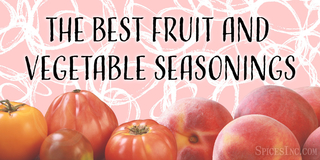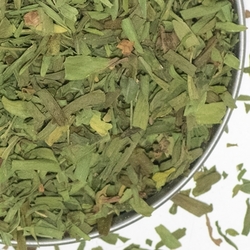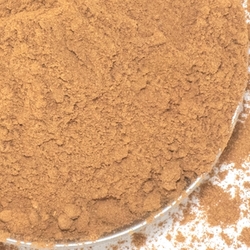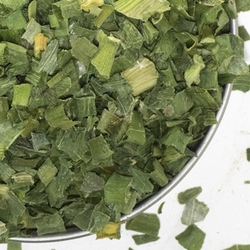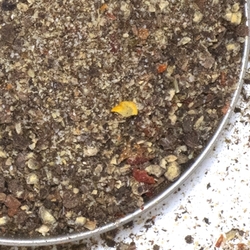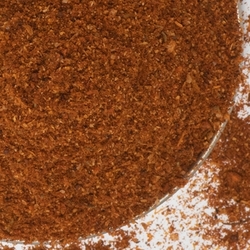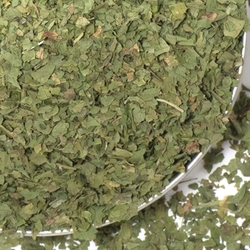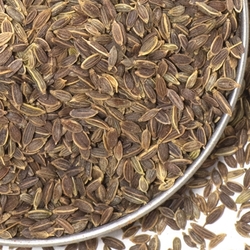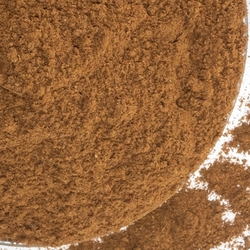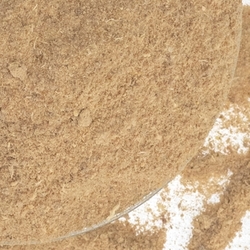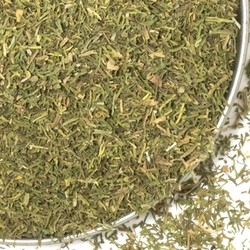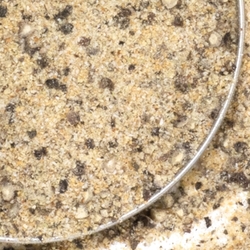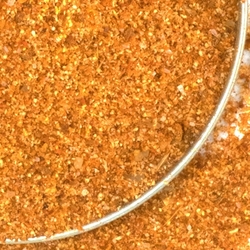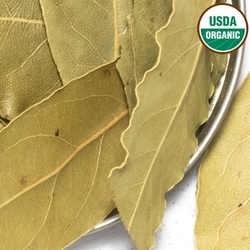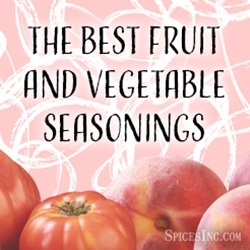
The Best Fruit and Vegetable Seasoning
Depending on your household growing up, there's a chance that it might be easy to dismiss fruits and vegetables as unexciting "healthy" foods that you've always considered boring. Because of their constant presence on your lunch tray at school or a seeming obstacle between you and your favorite Cookies and Cream ice cream, there's a chance you might be holding on to a small, bitter resentment towards things on the greener side. It's time to reconcile those feelings. It's time to reimagine your relationship with fruits and vegetables. It's time to… we have to say it… spice things up.
Like all foods, fruits and vegetables each have a complex symphony and balance of notes that make up a harmony called "Flavors." These flavors, familiar things like "sour," "sweet," "bitter," "salty" and "umami" all share a place in your tasting experience, but it's fighting a place with your olfactory senses as well. Scent contributes a huge portion of how taste is perceived, so consider the way not only will spices improve the overall flavor of your fruits and vegetables, but how it might also fragrance them as well. Often times vegetables are just tossed with butter, seasoned with salt & black pepper and served. Such a shame, when the flavor of most vegetables can be greatly enhanced by using a fresh perspective on seasoning.
While the number of vegetable and seasoning combinations are infinite, here are some suggestions to help you look at these staples in a fresh new way. Try any of these spices to complement the vegetable or fruit for which it is recommended.
This list is a great reference whether you would like to season your fruits and vegetables fresh, grilled, roasted, or baked!
What's the Difference between a Spice and an Herb?
Have you ever been confused about the difference between a spice and an herb? Sometimes they are used interchangeably, but an "herb" refers to a seasoning which comes from the leafy or green parts of a plant. A "spice" refers to a seasoning which comes from pretty much any other part of a plant you can think of, such as the root, stem, seeds, fruits, or flower of a plant. As far as flavor goes, there's not too much in terms of rules that apply for either category- herbs and spices can be used in either sweet or savory ways, and ultimately it will always come down to your individual taste. Clearly all herbs and spices have their own unique flavors, but as a general rule of thumb, herbs tend to taste more "herbal" and fresh, where spices tend to taste more warm and "spicy". Deciding how you'd like to enhance the taste of your dish comes down to asking yourself how you'd like to emphasize or balance the flavors your ingredients have. Say you have some lackluster carrots that have been languishing in your refrigerator that don't quite have the same punch you were hoping for. If you'd like to create a dish with the carrots that can trick you into thinking they taste fresher, you can think about pairing it with an herb like parsley that helps up amp up that signature "Spring!" flavor. If you'd like to make your carrots into a more savory and moody dish, a spice like nutmeg will help ground your taste buds, but also contrast the natural sweetness that carrots have. We always recommending seasoning with less rather than more as it is fairly easy to overwhelm your taste buds. Think of it this way - you can always add more but you can never take it back!
Our Favorite Spices and Herbs to Season Fruits and Vegetables:
Allspice - Allspice, as the name suggests, is a single spice that has a flavor profile that resembles many different spices like cloves, pepper, and cinnamon. If you're looking to add a warming spice but don't quite have a strong sense of which direction to go with, allspice might be the way to go!
Try Allspice with - Beets, Carrots, Sweet Potatoes
Amchur- Amchur (or Amchoor) is a unique spice that might be new to a lot of people, but is made from unripe, dehydrated mangoes which have been turned into a powder. Try it for a distinct tart and sour flavor!
Try Amchur with - Broccoli, Eggplant
Basil - There are many times of basil, but Sweet Basil is a familiar herb with people who are used to doing Mediterranean cooking. A common dish associated with basil is "Caprese," an Italian salad made from basil, tomatoes, and mozzarella that is seasoned simply to highlight the flavors of each individual ingredient. Basil shares the same family as mint, and like mint, it gives off a fresh and fragrant aroma. The taste of basil is bright and citrus-like.
Try Sweet Basil with - Beets, Bell Peppers, Corn, Eggplant, Green Beans, Tomato, Strawberries, Zucchini
Bay Leaves - Bay Leaves are an integral ingredient that can often be seen poking out of a pot of soup. Dried bay leaves are extremely potent (one or two is all you need!) and give dishes great depth of flavor and subtly round out flavors to make plain dishes feel more complex, without any one single taste characteristic standing out.
Try Bay Leaves with - Artichokes, Carrots, Pears
Caraway Seeds - Caraway seeds fit into the "earth-y, anise-y" category. They're a familiar spice in German cooking, and offer a sort of sweetness to the briny vinegar taste of dishes like sauerkraut.
Try Caraway Seeds with - Carrots, Fennel, Cabbage, Onion, Potatoes
Cardamom - Cardamom is a common ingredient in Indian cooking. When baking, ground cardamom is often used as a type of "cool heat" to add spice to the dish. Black cardamom, while harder to find, is great if you're looking to impart a more smoky or savory flavor to a dish.
Try Cardamom with - Sweet Potatoes, Apples, Oranges, Pears
Chives - Chives are an herb related to onion, and they have a very mild and recognizable onion flavor, but don't overwhelm the palate. They also make a beautiful garnish! Because of their onion-y taste, they might go better with vegetables than they do fruit.
Try it with - Asparagus, Cauliflower, Corn, Potatoes
Cilantro - We know this can be a tough sell for some people, and there's a reason that some people cannot bear the taste of cilantro. According to 23andMe, there's a DNA variation that effects the olfactory (scent) receptors that can make some people perceive the taste of cilantro as… "soapy." If you're one of those people, don't use cilantro. If you aren't one of those people, Cilantro is an amazing herb that adds a delicious tropical brightness to fresh fruits and vegetables.
Try Cilantro with - Tomatoes, Mangoes, Pineapple
Cinnamon - The oldest spice we have on record! Cinnamon is a great spice in both cooking and baking, sweet and savory alike. It is often described as a "Christmas-y" flavor and has a distinct an aroma as it does flavor.
Try Cinnamon with - Carrots, Sweet Potatoes, Apples, Pears, Plums
Citrus Zest - Citrus Zests are amazing spices to employ if you are looking for citrus flavor! Citrus is a great way to brighten up dull produce, and cuts a tart, refreshing path through fattier and more creamy dishes.
Try Citrus Zests with - Asparagus, All kinds of Fruit!
Cloves - Cloves might look a little scary, and the taste can be just sharp and pungent as they're appearance. Cloves can have a little bit of bite, so they're great if you have something particularly sweet that needs a balance.
Try Cloves with - Carrots, Sweet Potatoes, Apples, Cranberries, Peaches, Pears, Plums
Crushed Chiles and Chile Threads - The versatility of chile flakes is incredible, with crushed red pepper flakes being a familiar item in even the barest of spice cabinets. While they certainly can add heat to savory vegetables, they could also be used to bring out the sweetness and freshness of tropical fruits like mango or pineapple.
Try Crushed Chiles with - Broccoli, Tomatoes, Pineapple, Peaches
Cumin - Cumin is a warm and nutty spice, and a signature in Mexican and Vietnamese cooking. It's a familiar scent if you are a fan of tacos, and gives warmth to a dish without adding heat.
Try Cumin with - Eggplant, tomatoes
Dill Seed - Dill Weed, different from Dill Seed, has a sort of anise-y, licorice-y scent and tastes very clean and pungent.
Try Dill Seed with - Potatoes, Corn
Dill Weed - People might be surprised to learn that Dill is one of those cool ingredients where we get both herb AND spice from the same plant, just at two different points. Dill Weed is a fresh-tasting herb, reminiscent of parsley and celery, and is a great way to lighten up flavors. It pairs with tart ingredients as well.
Try Dill Weed with - Beets, Cucumber, Potatoes, Green Beans, Spinach
Garlic - Ah, garlic. You know this one! There are a lot of different "formats" you might decide to go with however- Depending on the size of your garlic, there might be a different ratio of garlic flavor to bite- where a larger mince might taste more garlicky if you do get a bite, there will naturally be less distribution. Garlic Powder is great if you want to really fragrance your plate. You could also consider getting the "Roasted" varieties of garlic, which will give you a deep, toasty taste.
Try Garlic with - Asparagus, Tomato, Green Beans
Ginger - Ginger is a common spice, but it's important to distinguish between fresh and powdered ginger depending on the recipe. Fresh ginger has a very tart and bright flavor that is pungent and tangy, but powdered ginger tends to be a little "earthier" and used in combination with other spices for a melody of flavors.
Try Ginger with - Beets, Carrots, Apples, Cranberries, Pineapple
Marjoram - Marjoram is an herb with a minty and fresh taste, but it can also be a little bit bitter. It's a delicate flavor, so like most herbs, it's probably a better idea to add what you have towards the end if you are cooking with it.
Try Marjoram with - Eggplant, Mushrooms
Mint - Another familiar favorite! Mint has a very recognizable flavor, and again, consider the way that fragrance will impact your taste. Mint gives a very fresh flavor and has a wonderful way of rounding out a meal and punctuating a dish. Though mint pairs greats with lemon, don't be afraid to stop and taste before you add more to avoid a "drinking orange juice after teeth brushing" effect.
Try Mint with - Beets, Carrots, Cucumbers, Peas, Berries, Pineapple, Oranges
Nutmeg - Nutmeg can be found either ground or whole, but you'll find you get a lot more flavor if you grate the whole nutmeg only when you need it. It's a great spice to complement more delicate flavors, and is often paired with spinach.
Try Nutmeg with - Mushrooms, Onion, Spinach, Sweet Potatoes, Apples, Pears, Peaches, Plums
Onion Powder - As its name suggests, onion powder is your answer if you're looking for onion taste and aroma without a particularly harsh onion bite. Just you would do with garlic, consider the size of the grind you're using when considering how much you should sprinkle on.
Try Onion Powder with - Asparagus, Peas
Oregano - Most people probably think of oregano that's sprinkled on top of a pizza at an Italian restaurant, but there's actually a few different types of oregano. Greek Oregano (i.e.- Italian restaurant Oregano) can be sweet and mild, but Mexican Oregano has a little more spice and citrus to it. Check your jar before you season- there is a difference!
Try Oregano with - Artichokes, Bell Peppers, Eggplant, Mushrooms, Onion, Tomato, Zucchini, Corn
Parsley - Parsley often carries a bad rap, and we won't stand for it anymore. Parsley is more than just a humble garnish; it freshens dishes up and expresses its best flavor when added towards the end of your cooking. It's an easy choice to make if you'd like an herb-y taste, and it's hard to find a lot of foods it would clash with.
Try Parsley with - Artichokes, Mushrooms, Peas, Potatoes
Pepper - If the act of seasoning your food involves you instinctively doing the same three flicks of S + P over everything, it's time to step back and truly assess what flavors you're looking to bring out with your food. While Black Pepper is great for adding zip and zest to your savory dishes, sprinkling a little on some fresh berries or pears might contrast with the natural sweetness fruits have. In addition to Black Pepper, we also offer a whole bunch of other different peppercorns that have their own unique flavors and aromas.
Try Pepper with - Mushrooms, Tomatoes, Berries, Pears
Rosemary - The sight of Rosemary reminds a lot of people of pine needles, and they don't smell too dissimilar either. They're a nice way to make something smell a little woods-y, and could be reminiscent of a fire or roasting smell.
Try Rosemary with - Peaches, Bell Peppers, Fennel, Peas, Tomatoes, Pineapple
Sage - Sage has a flavor that is slightly sweet, but also bitter. It's a very earthy flavor that you could employ to either contrast something lighter and sweeter
Try Sage with - Cauliflower, Carrots, Mushrooms, Onion, Pineapple
Savory - Summer Savory is slightly peppery, but is also reminiscent of a mix of other herb-y herbs like thyme.
Try Savory with - Broccoli, Green Beans
Sesame Seeds - Sesame seeds are incredible for adding nuttiness and textural interest to either sweet or savory recipes! While you can buy them pre-roasted, we recommend dry toasting them in a pan for a few minutes (making sure they don't burn!) to get the most flavor and aroma out of them.
Try Sesame Seeds with - Asparagus, Mushrooms, Berries
Star Anise - Star Anise is a unique spice that gives a very deep and rich note. It's often associated with the winter time and cold weather as it gives a warm and savory flavor people crave when it's colder out.
Try Star Anise with - Beets, Carrots, Berries, Pears, Plums
Tarragon - Tarragon is an important ingredient in French cooking and is often used in meat and egg dishes. Tarragon has a complex taste that might be fairly medicinal to some people, but it's fairly delicate in its potency and it's easy to get overwhelmed if you pair it with too many other flavors.
Try Tarragon with - Asparagus, Carrots, Mushrooms, Spinach, Peas, Tomatoes
Thyme - Thyme is another beautiful and subtle herb that adds just a little more depth to a dish without overpowering it. Thyme, like most herbs, is as much a part of the fragrance of a dish as it is about the flavor of a dish, so ditch your thyme if it's lost its smell. It's usually a safe bet if you're looking to add a little interesting twist without going too crazy.
Try Thyme with - Artichokes, Fennel, Mushrooms, Onion, Potatoes, Oranges
Turmeric- You might think of the color of Turmeric (That rich vibrant golden yellow! Swoon.) but it also offers plenty of deep, earthy flavor as well. When using Turmeric, think about the opportunity you have visually when using a spice so aesthetically beautiful as well! Get creative with your vision.
Try Turmeric with - Cauliflower, Cabbage, Broccoli, Potatoes, Peas
Vanilla Beans - Vanilla Beans might seem an intimidatingly gourmet spice, but now with the beauty of the internet (and the global food market expanding to bring exotic spices to your grocery store shelves) vanilla beans are now available for everyone! While most people are familiar with vanilla's flavor, depending on your country of origin for vanilla beans you might find a sweet and exciting floral twist to your dish.
Try Vanilla Beans with - All kinds of Fruit!
How Else Can I Season my Fruits and Vegetables?
In addition to individual herbs and spices, get even more creative and try a blend of seasonings as well! Some fan favorites that are great on vegetables are our Moroccan Vegetable Rub, Pennsylvania Pepper, and the super flavorful Roasted Garlic Pepper. We also offer a number of wonderful blends that would go amazing with fruit- some of our most popular and loved fruit blends are Pumpkin Pie Spice, Apple Pie Spice and the Mexican fruit seasoning inspired Chili Lime Seasoning.
Beyond the spice cabinet, there's a whole other realm that contains even more possibilities of how you prepare or dress your food as well- thinking about sautéing? Check our Olive Oil Guide to see how to shop for a great tasting oil that will complement your food, not spoil it. Want to add a home-y, hearty element to your dish, caramelizing the sugar and bringing out the sweetness in your food? Try roasting them! Layering new seasoning on top of new techniques might be the key to keeping your menu interesting and diverse without having to stray from the produce you already love. There are lots of ways to enhance your flavors. One of the best (or possibly most frustrating) things about food and cooking is that there are rarely any straightforward, right and wrong answers- at the end of the day, what tastes good to you and makes you happy to eat well is what's best! Consider every time you experiment with flavors to be an investment in getting to know yourself and your tastes better.

